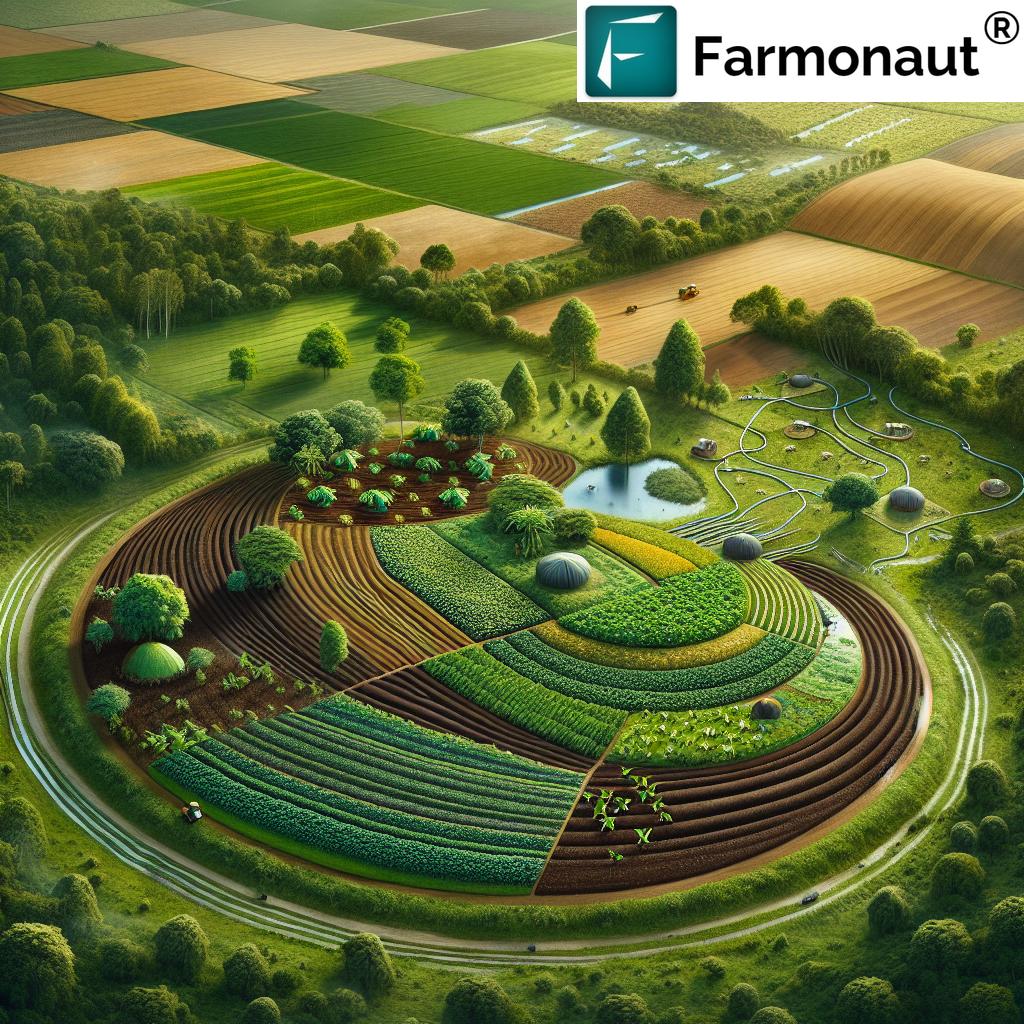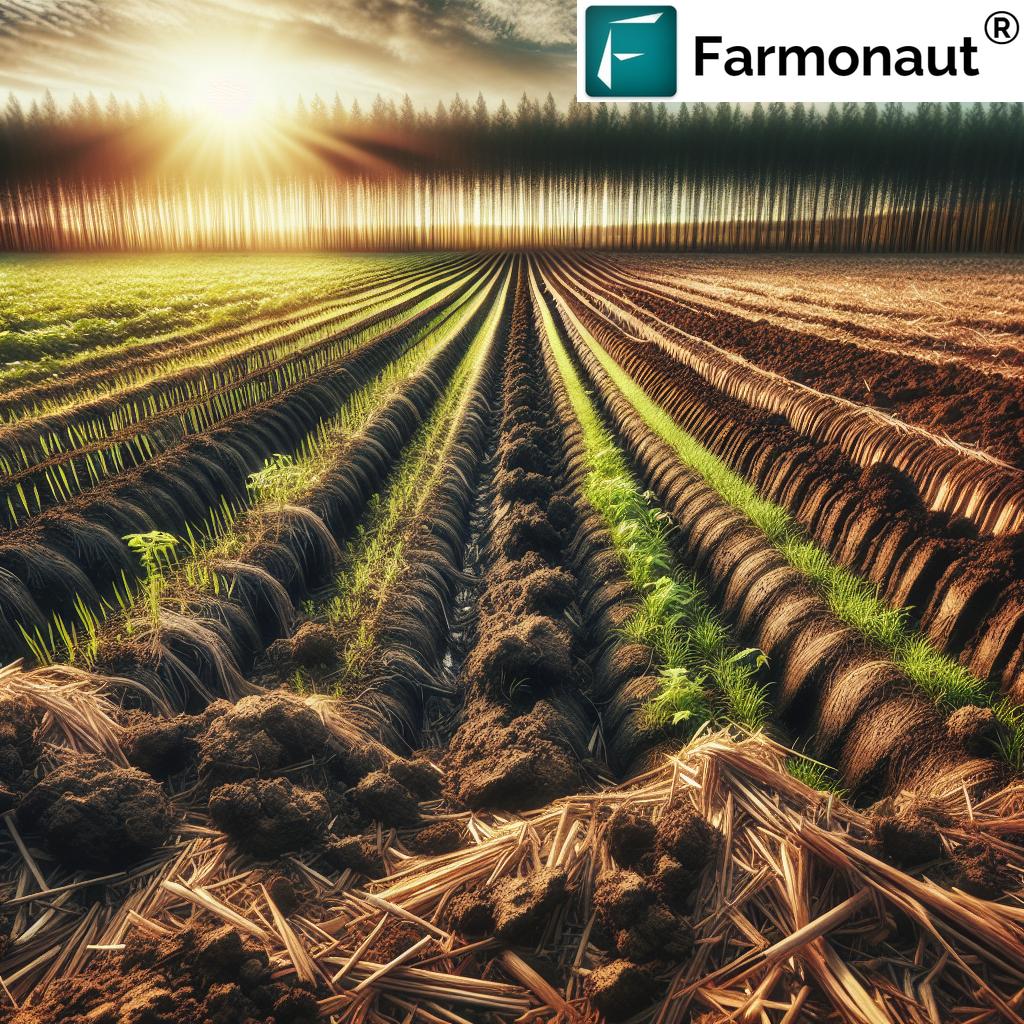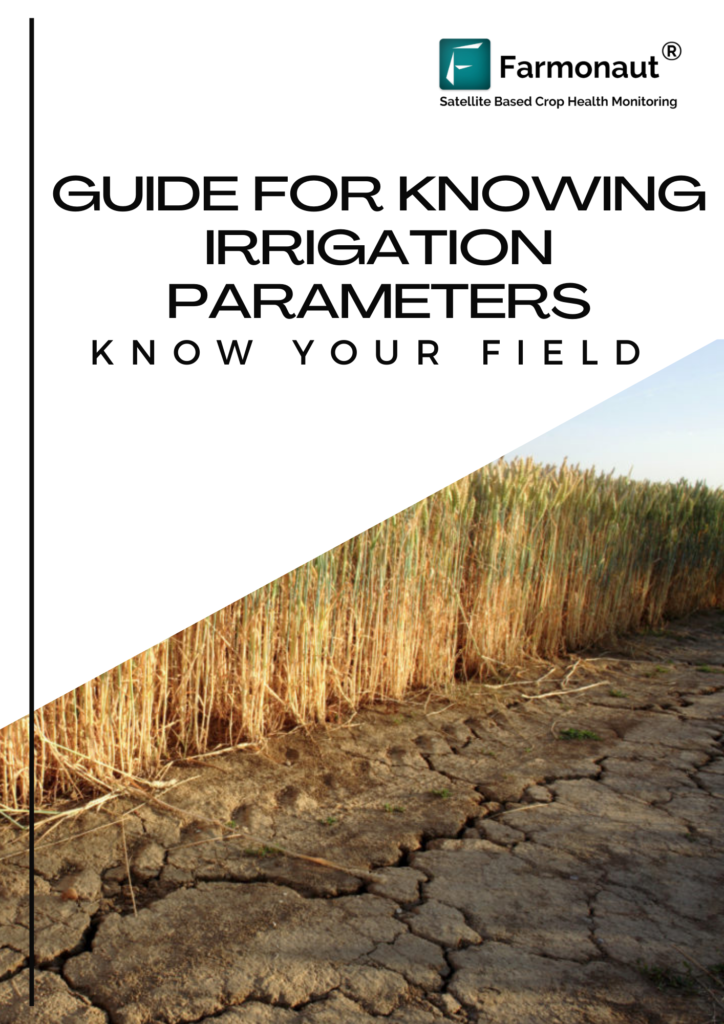Invest in Sustainable Agriculture: Uncover 7 Shocking Benefits

“Sustainable agriculture can increase soil organic matter by up to 58%, boosting long-term soil fertility and crop yields.”
As stewards of our land and providers for our communities, we face a pivotal question: How can we produce enough food for today’s rapidly growing population while ensuring that our farming methods do not compromise the ability of future generations to thrive? The answer lies in sustainable agriculture—a holistic, eco-friendly approach that balances production needs with environmental stewardship, economic viability, and social responsibility. By investing in sustainable agriculture, we not only address the urgent challenges of modern farming but also lay the framework for a resilient and equitable food system.
Understanding Sustainable Agriculture
Sustainable agriculture refers to practices that meet current food and textile needs without compromising the ability of future generations to meet theirs. It emphasizes efficient use of resources, conservation of biodiversity, ecological balance, and the integration of livestock and crops to support a harmonious system. At its core, this approach is about reducing reliance on chemical inputs, promoting crop rotation, embracing organic farming methods, and ensuring resource optimization.
- Efficient Use of Resources: Maximizing yield with minimal input, preserving soil, water, and energy.
- Biodiversity Conservation: Promoting a variety of crops and supporting beneficial species to create resilient agricultural systems.
- Ecological Balance: Using cover cropping, agroforestry, and reduced tillage to enhance soil health and reduce erosion.
- Social & Economic Responsibility: Improving farmer wellbeing and stimulating rural development.
With sustainable agriculture, we can embrace progressive farming practices designed to nurture the land, support communities, and foster a sustainable future.
7 Shocking Benefits of Sustainable Agriculture
Let’s explore the most impactful advantages of sustainable agriculture. Each benefit contributes to building healthy soils, conserving water, reducing costs, creating jobs, supporting food security, and safeguarding our planet through climate change mitigation.
1. Soil Health and Conservation
Soil health is the backbone of any resilient agricultural system. Through crop rotation, cover cropping, reduced tillage, and organic farming methods, sustainable farming enhances soil structure, increases organic matter, and prevents erosion. These techniques support farmers by maintaining fertile soils, improving moisture retention, and promoting long-term productivity.
- Crop rotation and organic methods replenish essential nutrients, limit disease cycles, and break pest cycles naturally.
- Cover cropping shields soil from erosion, enhances biodiversity, and contributes to better water infiltration and fertility.
- Reduced tillage and the use of compost foster microbial activity and reduce the risk of soil degradation.
Studies have shown that sustainable agriculture can improve soil organic matter by up to 58%—a transformative boost for soil fertility, structure, and crop yields (source).
2. Efficient Water Management in Agriculture
Eco-friendly water management in agriculture is one of the most shocking yet underappreciated benefits of sustainable farming. By implementing drip irrigation, rainwater harvesting, mulching, and cover cropping, we can dramatically reduce water waste while maximizing crop hydration. These methods are crucial for resilient systems, especially in drought-prone or water-scarce regions.
- Drip irrigation delivers water directly to plant roots, reducing evaporation losses by up to 50% compared to conventional irrigation.
- Rainwater harvesting captures runoff for reuse, supporting crops through dry spells and reducing demand on natural water sources.
- Mulching and cover cropping minimize evaporation, maintain soil moisture levels, and lower the frequency and volume of irrigation needed.
By investing in large-scale farm management technologies—such as those provided by Farmonaut—we can maximize resource efficiency, track moisture levels in real-time, and prevent both over-irrigation and under-watering.
3. Biodiversity Preservation and Ecosystem Resilience
Biodiversity preservation is at the heart of sustainable agriculture. By minimizing synthetic pesticides and fertilizers, supporting organic farming methods, practicing intercropping, and preserving natural habitats, we foster a diverse ecosystem vital for resilient food systems.
- Agroforestry and hedgerows create wildlife corridors and shelter beneficial species such as pollinators and pest-eating birds.
- Crop diversification and organic inputs reduce pest outbreaks and disease, bolstering natural resilience.
- Healthy microbial life in soil increases with reduced chemical inputs, increasing nutrient cycling and plant health.
Preserving biodiversity not only aligns with environmental stewardship but also enhances productivity and reduces dependence on costly chemical controls (source).
4. Climate Change Mitigation in Agriculture
Strongly linked with sustainable agriculture is the concept of climate change mitigation. By adopting practices like no-till farming, agroforestry, and organic soil amendments, we can capture and store atmospheric carbon in both plants and soils.
- No-till farming preserves soil carbon, reduces greenhouse gas emissions, and improves soil structure for long-term production viability.
- Agroforestry integrates trees and shrubs into croplands, sequestering carbon above and below ground.
- Cover cropping increases carbon stocks by building root biomass and organic matter.
These methods directly contribute to tracking and reducing carbon footprints—a capability enhanced by Farmonaut’s carbon footprinting tools: making data-driven climate stewardship accessible and actionable (source).
5. Cost Savings for Farmers
Sustainable farming practices dramatically reduce input costs and help make farms more profitable.
- Legume crop rotations and green manure naturally boost nitrogen, lowering the need for expensive synthetic fertilizers.
- Reduced synthetic pesticide use limits both material and labor costs.
- No-till or low-till systems cut down on fuel and machinery usage, decreasing energy costs and wear and tear on equipment.
We can further control and optimize these costs through smart fleet and resource management tools that streamline operations, prevent waste, and reduce unnecessary expenses.
6. New Market Opportunities and Traceability
As more consumers and retailers demand sustainably produced and organic products, farmers who embrace sustainable methods access premium markets and better prices.
- Organic, sustainably labeled products command higher premiums, especially in health-conscious and export markets.
- Direct sales (like community-supported agriculture programs) foster local relationships and retain a larger portion of revenues for farmers.
- Product traceability, enabled through platforms like Farmonaut’s blockchain-based traceability solutions, increases consumer trust and transparency while reducing fraud in the supply chain.
Market opportunities are also enhanced when farmers can prove the sustainability of their products—from farm to fork—backed by certified traceability and real-time data reporting.
7. Job Creation, Rural Development, and Social Well-being
Sustainable agriculture acts as a catalyst for job creation, rural development, and overall social well-being.
- New positions emerge in organic certification, conservation planning, resource monitoring, and sustainable supply chains.
- Education and training programs upskill rural communities, making sustainable agriculture a driver of equitable economic growth.
- Improved health and labor conditions for farmworkers result from reduced exposure to hazardous chemicals and better work practices.
Investing in sustainable methods contributes to stronger, healthier communities where food security, rural livelihoods, and environmental quality all improve together. Read more about how Farmonaut’s crop loan and insurance verification is streamlining rural financial inclusion.

Benefit Impact Comparison Table
| Benefit | Description | Estimated Impact | Eco-Friendly Practice Involved |
|---|---|---|---|
| Soil Health and Conservation | Increases organic matter and improves structure, water retention, and fertility. | Up to 58% increase in soil organic matter | Crop rotation, cover cropping, reduced tillage |
| Water Management | Decreases water consumption, prevents runoff, keeps soil moist. | 30-50% reduction in water use | Drip irrigation, rainwater harvesting, mulching |
| Biodiversity Preservation | Maintains diverse species, stabilizes ecosystem, reduces pests. | Up to 20% more beneficial species observed | Organic inputs, crop diversification, agroforestry |
| Climate Change Mitigation | Captures carbon, limits emissions, boosts resilience. | 20–40% increase in carbon sequestration | No-till farming, cover cropping, agroforestry |
| Cost Savings | Reduces need for chemical inputs and field work. | Up to 40% cost reductions (inputs, fuel) | Reduced chemical reliance, no-till, green manure |
| Market Opportunity | Access to premium, organic, traceable markets. | 15-30% price premiums for organic | Certification, blockchain traceability, direct sales |
| Job Creation & Rural Development | Diversifies economy, creates employment, strengthens communities. | 10–20% employment growth in rural zones | Certification jobs, extension services, resource management |
Farmonaut’s Role in Sustainable & Eco-Friendly Farming
Farmonaut brings precision agriculture technology and data-driven insights to the forefront of sustainable farming practices around the world. Using satellite imagery, AI-driven advisory systems, blockchain traceability, and carbon footprinting tools, Farmonaut empowers us to implement sustainable methods, monitor progress, and maximize the benefits of eco-friendly farming.
- Satellite-Based Crop Health Monitoring: Assess vegetation, soil moisture, and health indices (like NDVI) to make informed irrigation, fertilization, and pest management decisions—crucial for sustainable water management in agriculture.
- AI Advisory (Jeevn): Personalized farm advisory draws on AI and weather data to offer custom insights for optimizing sustainable farming techniques and reducing input use.
- Blockchain-Based Traceability: Ensure transparency and authenticity in the food supply chain, especially for organic and sustainably produced products.
- Fleet & Resource Management: Track, manage, and optimize farm equipment and resources, reducing waste and improving economic viability.
- Carbon Footprinting: Monitor and reduce agricultural emissions to contribute to climate change mitigation in agriculture (learn more).
Additionally, Farmonaut provides services through APIs and offers developer documentation—expanding the opportunity to integrate real-time, accurate data into any agricultural system.
For those managing large-scale crops, forest plantations, or requiring climate-smart advisories, Farmonaut’s Crop, Plantation & Forest Advisory tools make sustainability accessible, measurable, and effective.
Challenges & Considerations in the Transition to Sustainable Agriculture
While the benefits of sustainable agriculture are profound, the transition to sustainable agriculture brings unique challenges:
- Transition Period: Shifting from conventional to sustainable systems may initially reduce yields or require adjustment periods as soils and ecosystems recover. This transition requires patience, ongoing evaluation, and adaptation to local conditions.
- Initial Investment: Upfront investment in new equipment, training on organic farming methods, and infrastructural upgrades can pose barriers, especially for smallholders with limited access to credit or financial support.
- Knowledge & Education: Widespread adoption depends on education, extension services, and on-the-ground training to help farmers understand and implement sustainable practices correctly and effectively.
Farmonaut’s tools and real-time monitoring solutions help reduce risk and speed up the transition by providing actionable, accurate data. For insurance, compliance, or certification, the Crop Loan & Insurance Verification tools streamline processes for both farmers and financial institutions.
Essential Support: Policy, Investment & Training for Farmers
- Better Subsidies & Incentives: Redirecting public funds toward sustainable practices encourages rapid and widespread adoption.
- Research & Development: Ongoing research into sustainable farming techniques, drought-resistant crops, and natural pest controls gives farmers practical, local solutions.
- Education & Extension Services: High-quality training, field demonstrations, and advisory programs are critical. Farmonaut’s technology supports this by offering AI-based insights and up-to-date monitoring via mobile, web, and API.
Through strong institutional support, investment in technology, and robust training programs, we can overcome obstacles and ensure that the advantages of sustainable agriculture reach every farmer—from smallholders to large-scale operations.
Farmonaut Subscriptions
FAQ: Invest in Sustainable Agriculture
What is sustainable agriculture?
Sustainable agriculture refers to the use of farming practices that balance production with long-term environmental, economic, and social sustainability. It aims to meet current food needs while preserving resources for future generations.
How does sustainable agriculture benefit soil health?
By incorporating crop rotation, cover cropping, reduced tillage, and natural amendments, sustainable agriculture improves soil organic matter, structure, and fertility, ensuring soils remain productive and resilient over time.
What impact do sustainable farming practices have on water resources?
Eco-friendly techniques like drip irrigation and mulching can reduce water usage by up to 30-50%, efficiently delivering water to plants and conserving vital resources for future generations.
How can I access Farmonaut’s sustainable farming solutions?
Farmonaut offers web and mobile apps for real-time crop and resource monitoring. You can access these solutions on the Farmonaut platform and explore more about APIs, traceability, and large-scale management tools online.
Does sustainable agriculture cost more?
There can be some initial investment during the transition, but reduced input costs, increased yields, and access to premium markets often make sustainable agriculture more profitable over time.
Are there government policies and incentives to support sustainable agriculture?
Yes. Many governments offer subsidies for conservation agriculture, organic certification, irrigation improvements, and training. These policies facilitate the transition while ensuring long-term benefits for farmers and communities.
How do I start transitioning to sustainable agriculture?
Begin by integrating one or two practices (such as cover cropping or drip irrigation), use digital monitoring tools like Farmonaut, and reach out to local extension services for guidance and training.
Conclusion: Building a Sustainable Future with Agriculture
Investing in sustainable agriculture is more than an environmental imperative; it’s a strategic, economic, and social opportunity for us all. By embracing methods that enhance soil health, conserve water, promote biodiversity, and mitigate climate change, we lay the groundwork for a resilient, productive, and equitable food system.
With precision technologies, data-driven advisories, and transparent supply chains, platforms like Farmonaut make the transition to sustainable agriculture practical, measurable, and scalable for every stakeholder in the agricultural ecosystem. As we continue to nurture our planet, investing in sustainable agriculture ensures we meet the needs of today—without compromising the ability of future generations to meet theirs.
Ready to take action? Start leveraging real-time monitoring, advanced analytics, and holistic farm management solutions. Together, we can transform agriculture—and our world—for the better.











